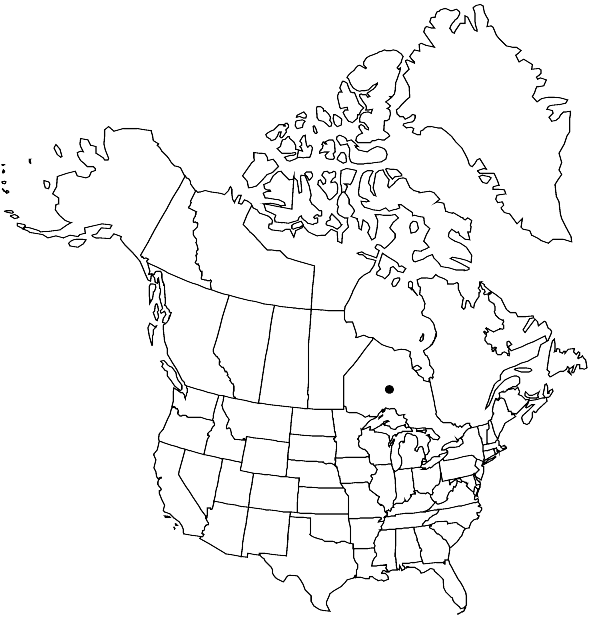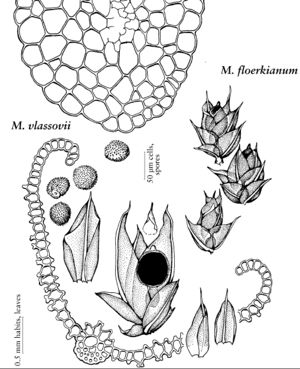Difference between revisions of "Microbryum floerkeanum"
Syn. Musc. Eur., 11. 1860,.
Basionym: Phascum floerkeanum Weber & D. Mohr
FNA>Volume Importer |
FNA>Volume Importer |
||
| Line 25: | Line 25: | ||
|elevation=low elevations | |elevation=low elevations | ||
|distribution=Ont.;Europe;sw Asia;n Africa. | |distribution=Ont.;Europe;sw Asia;n Africa. | ||
| − | |discussion=<p>The leaves of Microbryum floerkeanum are ovate to ovate-lanceolate and sheath the immersed capsule. The papillae occur near the apex of the leaf, one per lumen, and are large, nearly covering the lumen. The calyptra is variably papillose, merely rough, or smooth. Variety badium (Bruch & Schimper) Schimper is poorly distinguishable, but may be segregated by its long-acuminate leaf apices—the typical variety has short-acuminate apices.</p> | + | |discussion=<p>The leaves of <i>Microbryum floerkeanum</i> are ovate to ovate-lanceolate and sheath the immersed capsule. The papillae occur near the apex of the leaf, one per lumen, and are large, nearly covering the lumen. The calyptra is variably papillose, merely rough, or smooth. Variety badium (Bruch & Schimper) Schimper is poorly distinguishable, but may be segregated by its long-acuminate leaf apices—the typical variety has short-acuminate apices.</p> |
|tables= | |tables= | ||
|references= | |references= | ||
| Line 49: | Line 49: | ||
|publication year= | |publication year= | ||
|special status= | |special status= | ||
| − | |source xml=https://jpend@bitbucket.org/aafc-mbb/fna-data-curation.git/src/ | + | |source xml=https://jpend@bitbucket.org/aafc-mbb/fna-data-curation.git/src/8f726806613d60c220dc4493de13607dd3150896/coarse_grained_fna_xml/V27/V27_928.xml |
|subfamily=Pottiaceae subfam. Pottioideae | |subfamily=Pottiaceae subfam. Pottioideae | ||
|genus=Microbryum | |genus=Microbryum | ||
Revision as of 17:58, 18 September 2019
Distal laminal cells weakly convex superficially, adaxial surface of costa not mammillose. Seta extremely short, nearly absent. Capsule nearly spherical, cleistocarpous. Spores papillose, 20–25 µm.
Phenology: Capsules mature in late fall (Oct–Nov).
Habitat: Soil, fields, pastures
Elevation: low elevations
Distribution

Ont., Europe, sw Asia, n Africa.
Discussion
The leaves of Microbryum floerkeanum are ovate to ovate-lanceolate and sheath the immersed capsule. The papillae occur near the apex of the leaf, one per lumen, and are large, nearly covering the lumen. The calyptra is variably papillose, merely rough, or smooth. Variety badium (Bruch & Schimper) Schimper is poorly distinguishable, but may be segregated by its long-acuminate leaf apices—the typical variety has short-acuminate apices.
Selected References
None.
Lower Taxa
None.
